Agaricus arvensis is a stocky, firm, edible mushroom. Because some of the 300 species in the Agaricus genus are toxic, you must know how to identify this wild mushroom correctly. Not only is this mushroom delicious, but it also benefits the ecosystem surrounding it.
Agaricus Arvensis Profile
From the Agaricaceae family, the Agaricus arvensis was first described by Jacob Christian Schaeffer in 1762. The epithet of the scientific name, arvensis, means “of the field” or “of the meadow.”
Horse mushroom is the most universal common name. It might be named this because the mushroom is often found near cow manure or because of the size of the mushroom.
In Australia, they call it an almond mushroom. In New Zealand, they call it a snowball mushroom.
What Are You Foraging For Right Now?
We're thrilled to hear your ideas. What would you like to submit today? Feel free to share your thoughts and experiences with us.
Check out our video on how to identify and use horse mushrooms in the kitchen.
How to Identify the Horse Mushroom
- The stem is 2 to 5 inches tall and up to 1 inch wide
- Young gills are white or pale pink. They turn gray with age and then finally mature to a chocolate brown color. The spore print is blackish-brown.
- When looking from the underside, you’ll notice a double ring with a cogwheel pattern around the stipe.
- The whitish cap is smooth and dry with brown spores. The young caps are spherical and flatten as they mature. They grow to be 3 to 8 inches wide.
- A yellow stain is left behind after being bruised.
- The mushroom smells like anise.
- It has white, firm flesh.
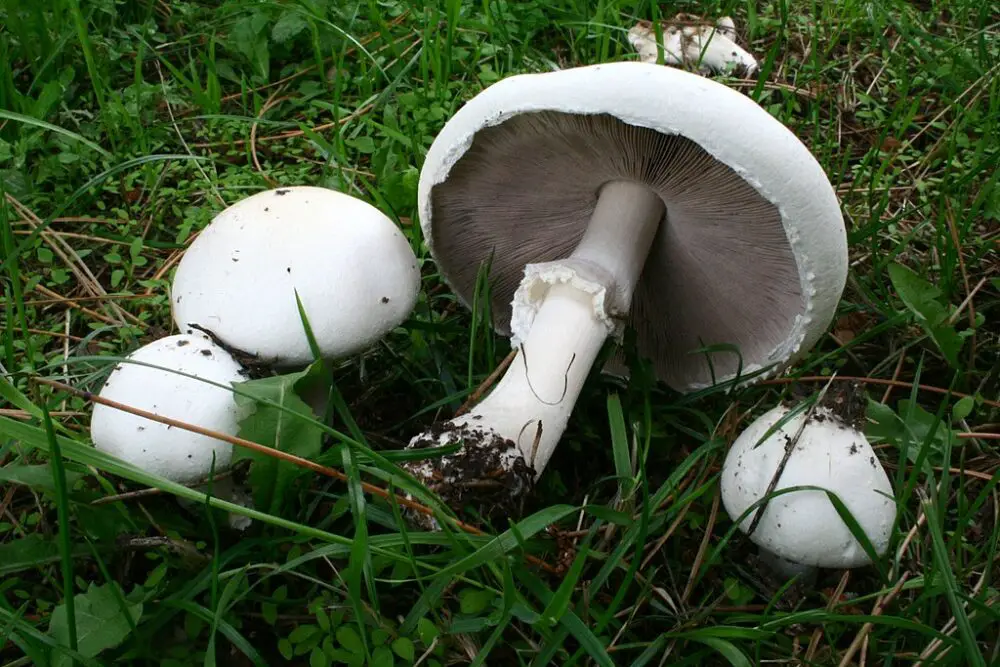
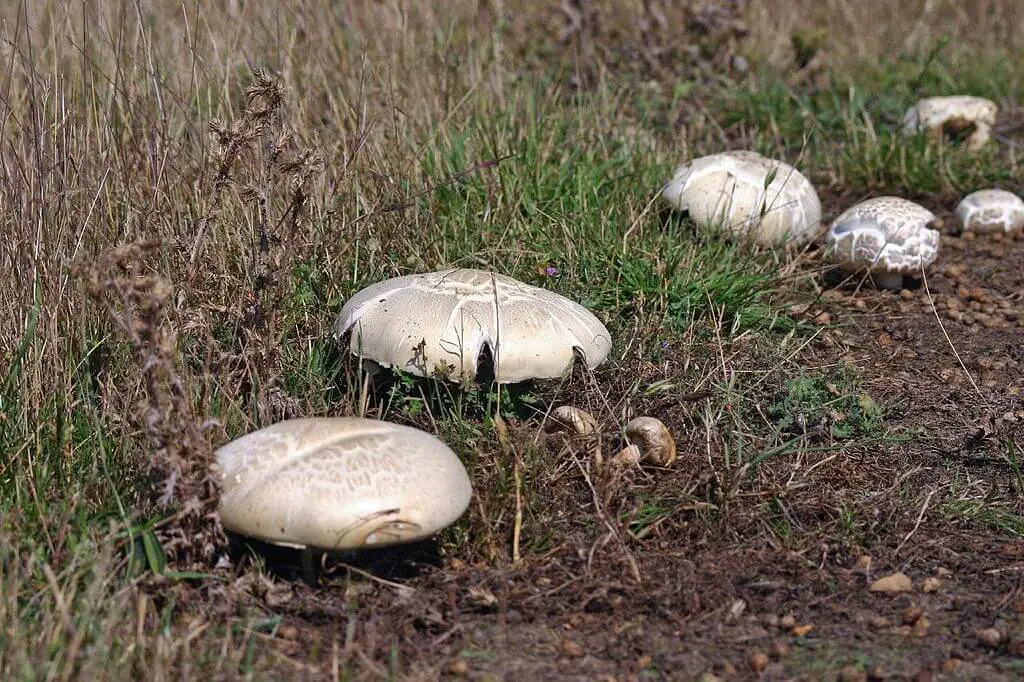
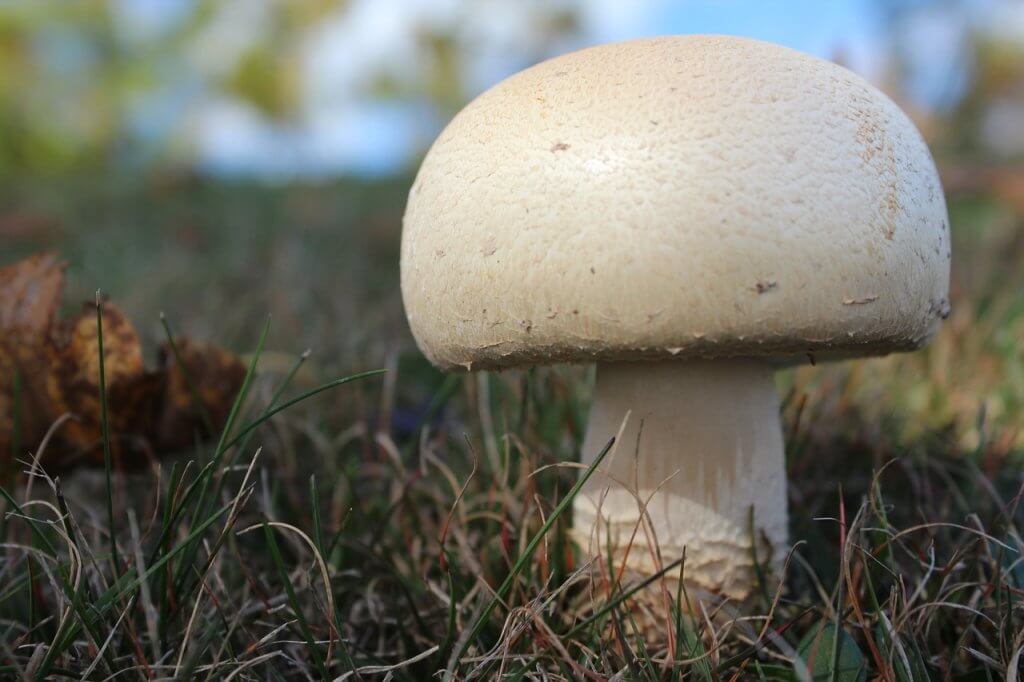
Where and When Does the horse mushroom Grow?
You can find this large mushroom in Britain, Iran, Ireland, North America, Australia, and New Zealand. It appears from summer to fall, more specifically July to November.
It grows best in rich soil, near organic matter. The horse mushroom is commonly found in meadows, stables, and open forests.
It sometimes grows in fairy ring formations and sometimes near nettles.
Agaricus Arvensis Look-Alikes
A young horse mushroom is often confused with mushrooms from the Amanita genus. The poisonous destroying angel mushrooms looks very similar.
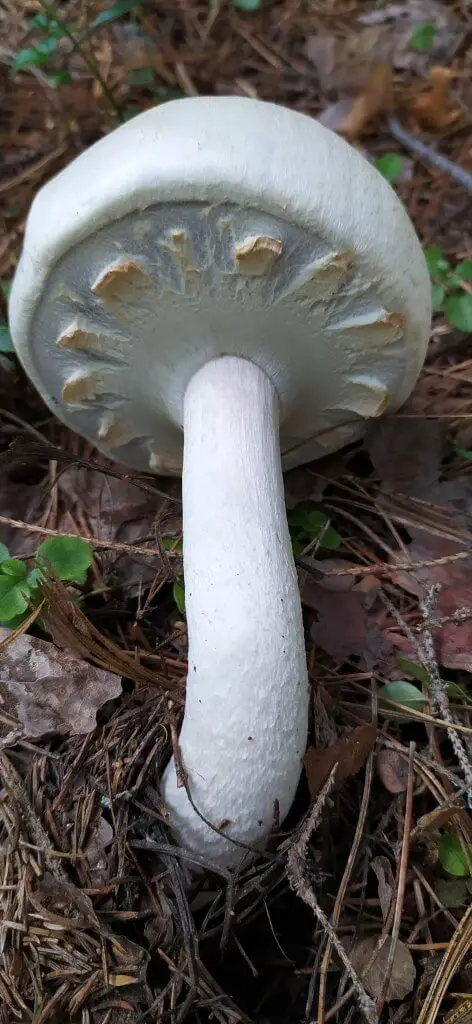

You must take a spore print to ensure you have picked the right mushroom. If the print is brown and all other identifiers check out, it is probably a horse mushroom.
Other look-alike species from the same family include:
- Agaricus xanthodermus is also known as the yellow stainer. The main difference between this mushroom and A. arvensis is that when you cut the stalk at the mycelium, the stem base turns chrome yellow when exposed to air. Additionally, it has an unpleasant, inky odor. A. xanthodermus causes stomach pain and is not edible.
- Agaricus campestris, aka the field mushroom, looks almost the same as a horse mushroom; it is generally smaller and appears two weeks after A. arvensis. If you confuse the two, you’ll be happy to know they are both edible.
- Agaricus bisporus, aka button mushroom, only has microscopic differences compared to A. arvensis and it’s also edible. The button mushroom is the most commonly cultivated mushroom. It is the one you see in grocery stores and on pizza.
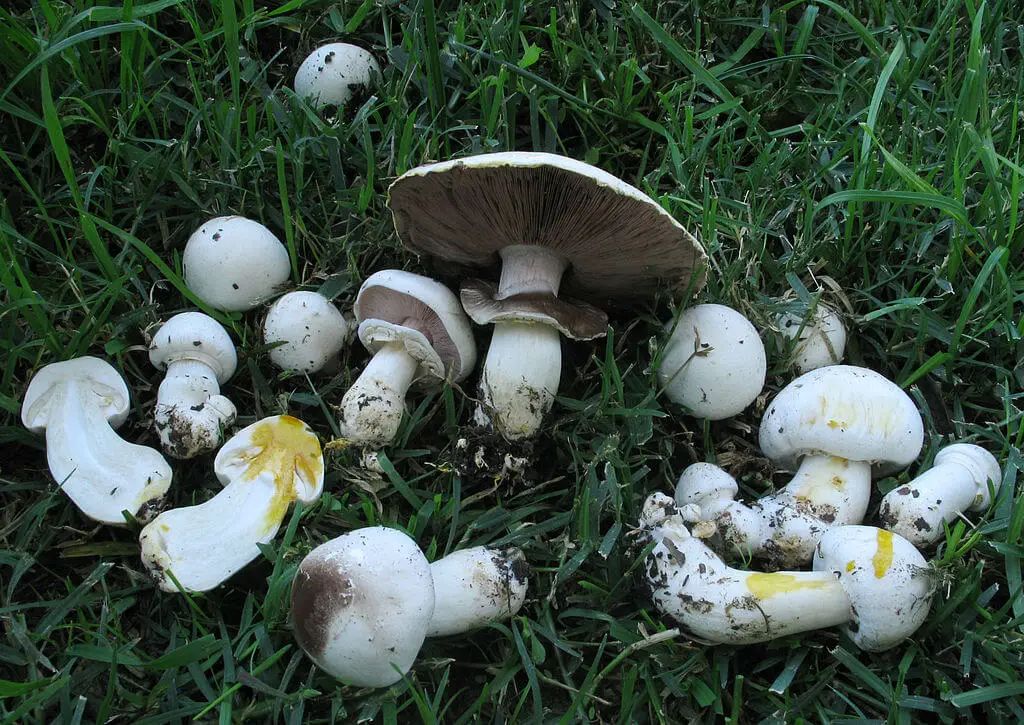

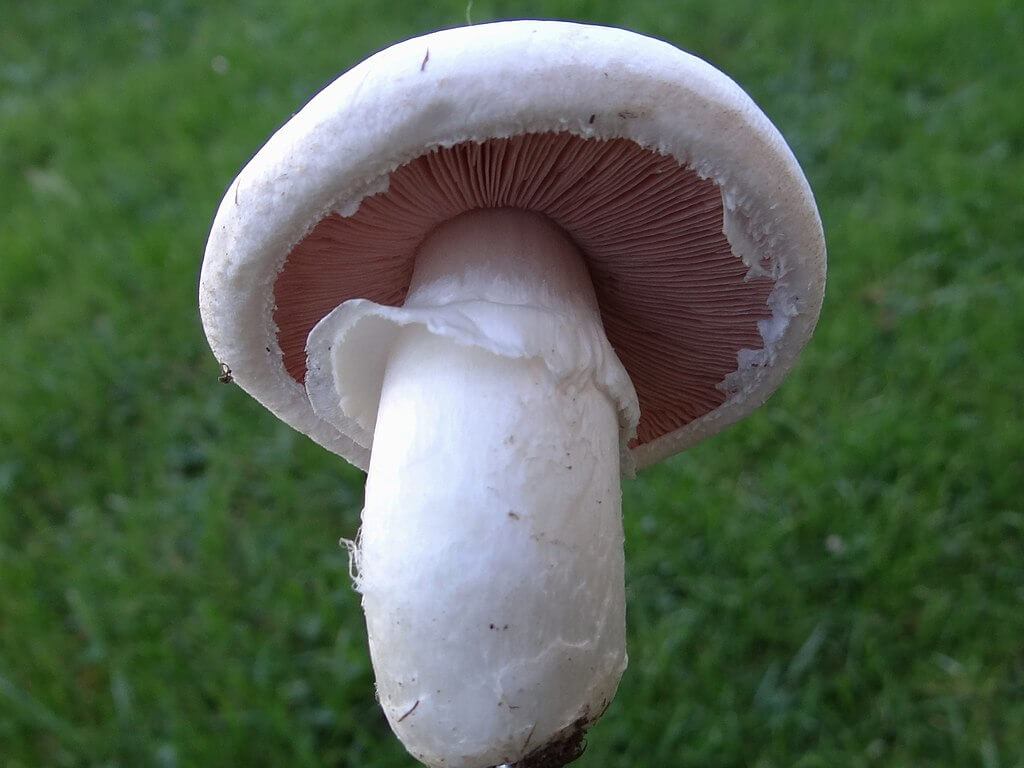
Is the Horse Mushroom Edible?
This wild mushroom is edible. Agaricus arvensis smells like anise and is crisp with a mild, slightly sweet almond flavor. The more mature the species is, the stronger the flavor.
Like other Agaricus species, the horse mushroom has high levels of heavy metals, specifically cadmium and copper.
Repeatedly eating large amounts of cadmium can lead to kidney disease, liver damage, and weakened bones.
Over-consuming copper can cause liver damage, abdominal pain, diarrhea, and nausea or vomiting.
Enjoy this wild food in small portions.
What Are the Benefits of the Agaricus Mushroom?
In China, some Agaricus mushrooms have been used to treat lumbago and tendon pain.
Most notably, Agaricus mushrooms benefit the ecosystem. As a saprobic mushroom, it transforms organic matter and leaves around it into rich, valuable soil.
This soil releases nutrients that help the surrounding flora to grow quicker and thrive.
How to Cook With the Horse Mushroom
This edible species can be used the same way you use a portobello mushroom or a button mushroom.
Although the stalk is edible, most people prefer to remove it before consuming the mushroom. From there, you can decide how you’d like to chop it.
It can be roasted, sauteed, or fried. You can eat it in risotto, in an omelet, in a soup, as a component in a sauce, or tempura-fried.
Here are a few recipes I recommend:
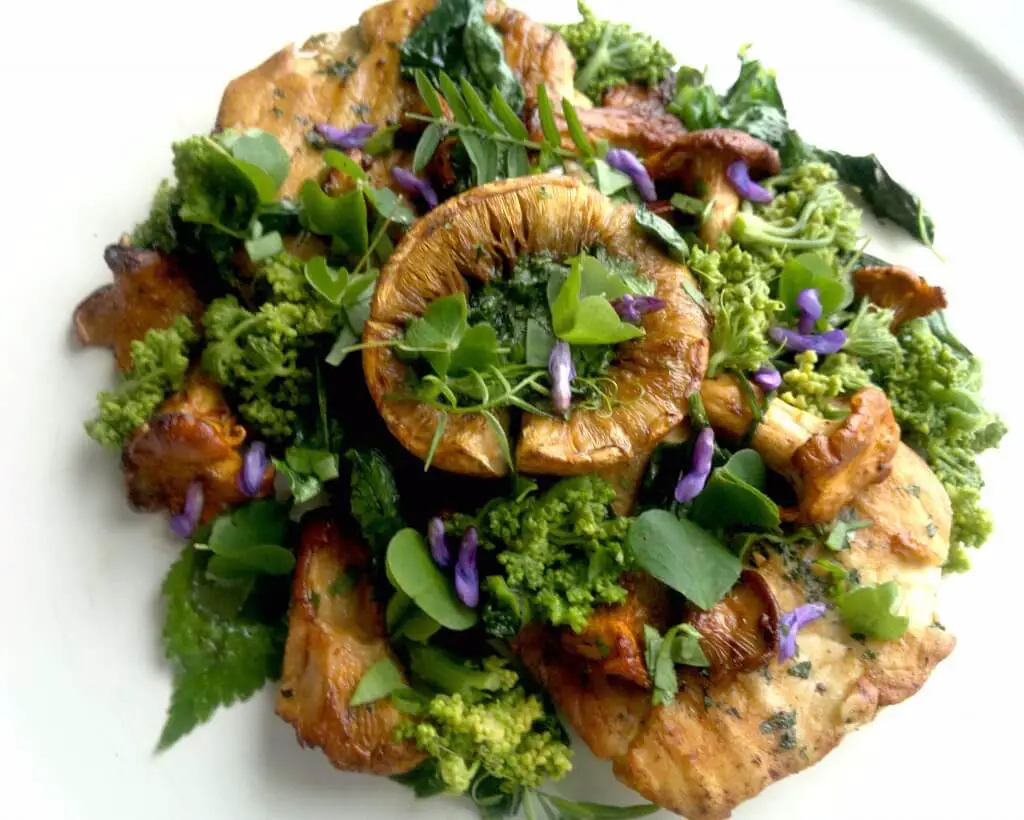
Like with the button mushroom, the cooking options for a horse mushroom are endless.
Originally from Florida, but with a lust for travel, Sami has found herself in many remote areas with little-to-no access to traditional medicines. Since 2014, she has been experimenting with natural remedies, eastern medicine, and foraging. She believes that the Earth provides us with everything we need to live, heal, and cure.

